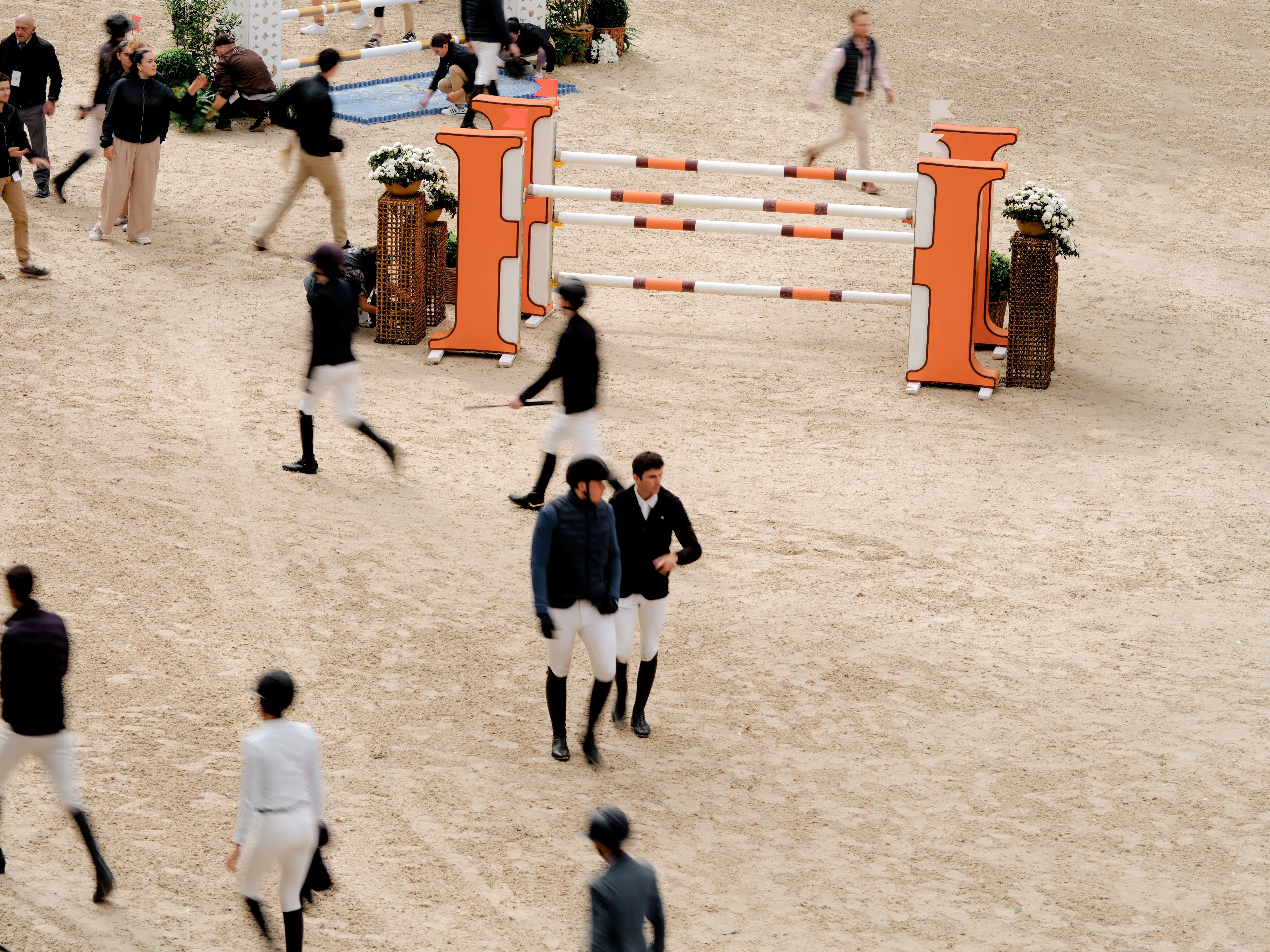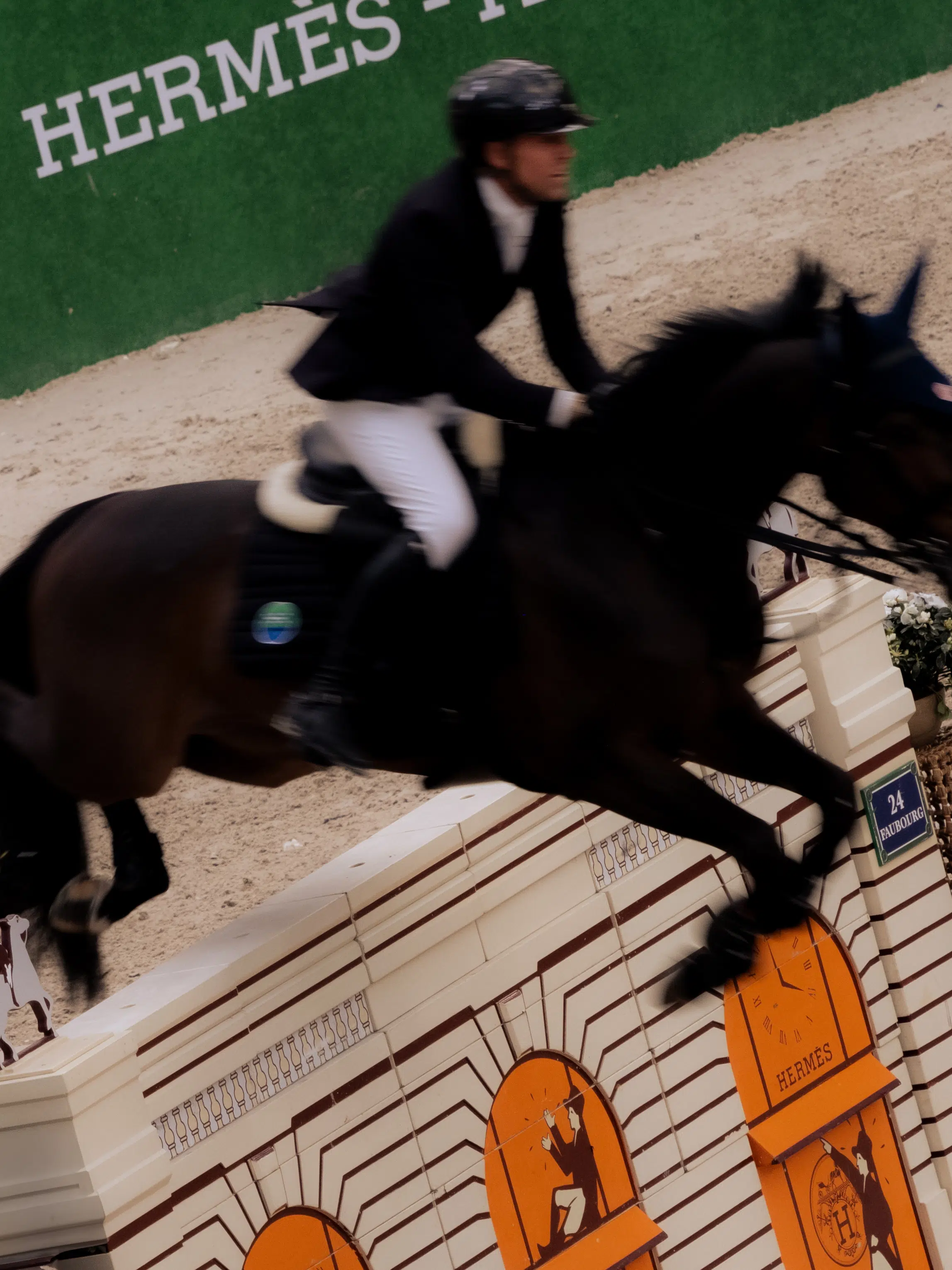Santiago Varela Ullastres and Grégory Bodo have worked together on the Saut Hermès since 2018, one as course designer, the other as his assistant, regularly swapping roles from one competition to the next across the show jumping seasons. We meet these two stage directors to discuss the foundations and values of a multi-faceted profession in which the comfort of the horses guides every course.

Profession: course designer
Much more than merely setting up the fences ahead of an event, the course designer ensures the smooth running of an equestrian competition, for both the participants and the spectators.
As Grégory Bodo explains, it involves “creating courses from one’s imagination alone”, bound by nothing but the dimensions of the arena and the obstacles imposed by the rules of each competition.
The Frenchman prefers the English term “course designer” over the French chef de piste (literally, “arena manager”), as it better describes the work of a director overseeing the competition’s decor, terrain and environment in order to direct a troupe of players devoted to giving an exceptional performance.
The horse above all else
While paying careful attention to the horses’ wellbeing, the course designer must “set a course sometimes strewn with pitfalls” in an arena where great sport takes top priority.
With forty years of experience, Santiago Varela Ullastres notes that a five-star competition such as the Saut Hermès and its limited surface area demand “150%” focus from the designer when meticulously configuring the combinations of obstacles and turns.
The difficulty of each class is for the rider to navigate; it is the rider alone who must maintain the pace, balance and trajectory required to approach each obstacle with precision.
As high-level athletes, the competing horses always find a natural solution. Having watched Hickstead, Clooney 51, King Edward and the greatest champions of their generations jump, Bodo and Varela Ullastres seek above all to allow the horses to “express themselves with ease” under the spotlights.
